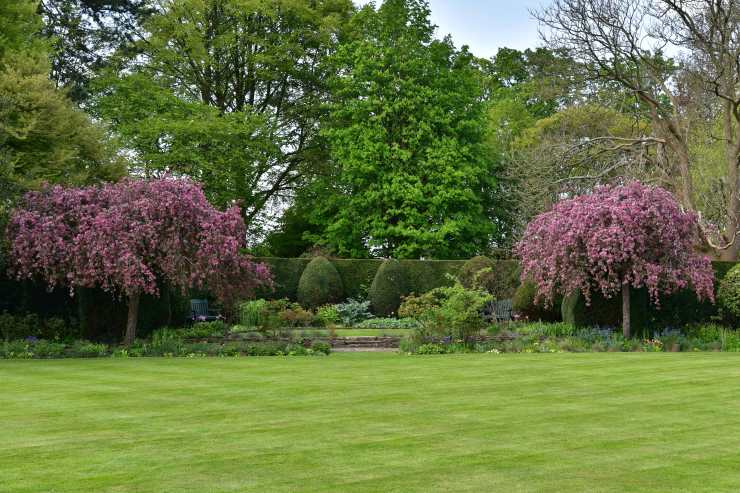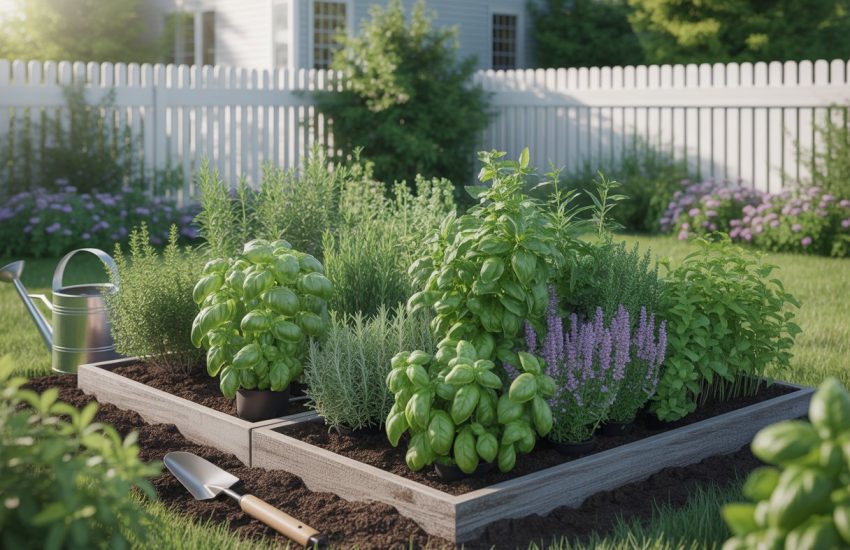Best Soil for Bluebells Growth: Ideal Conditions for Healthy Blooms
Bluebells really love well-drained, fertile soil packed with organic matter. The best soil for bluebells stays moist but not soggy, and should be slightly acidic to neutral, with a pH between 6.0 and 7.0.
This kind of soil helps them put out those vivid blooms and keeps them healthy.
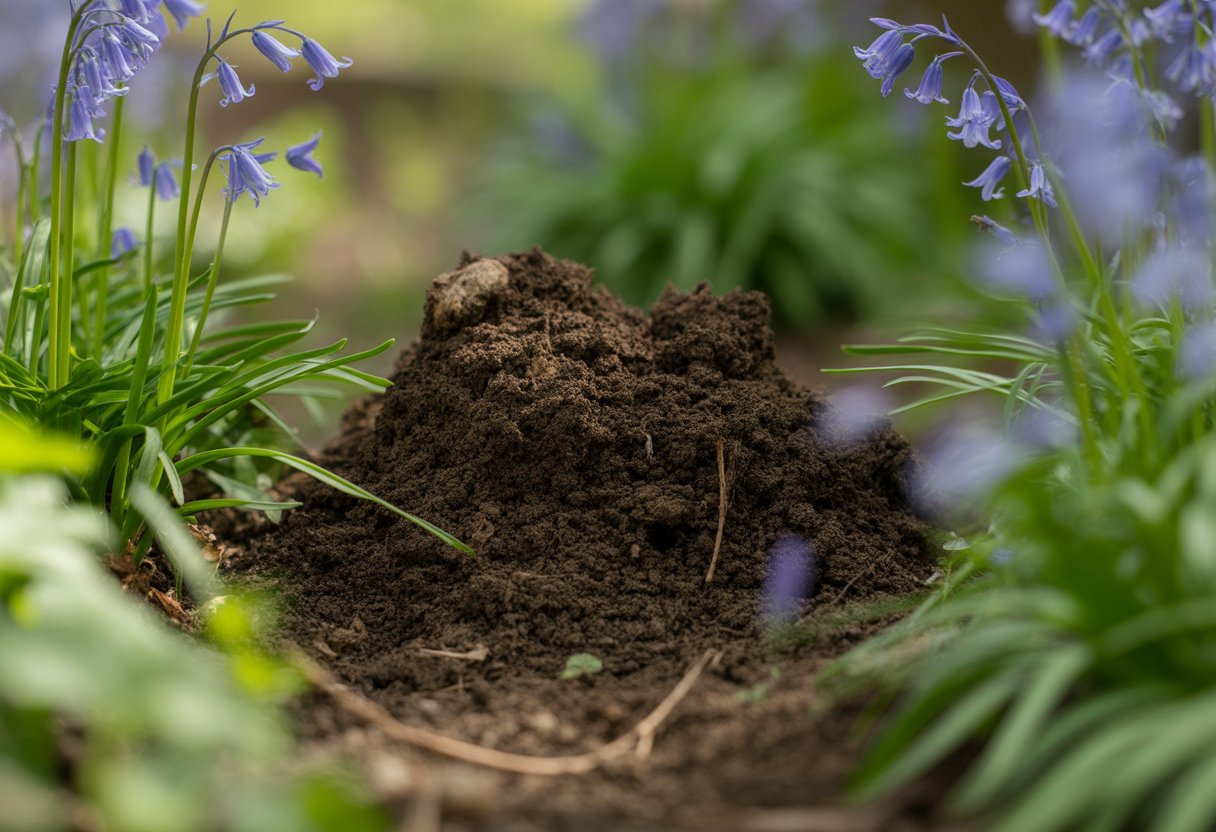
They do best in soil that holds onto moisture but doesn’t drown the roots. If you toss in some compost or leaf mold, you’ll boost the soil’s texture and nutrients, making it a friendlier place for bluebells to settle in.
Essential Soil Requirements for Bluebells
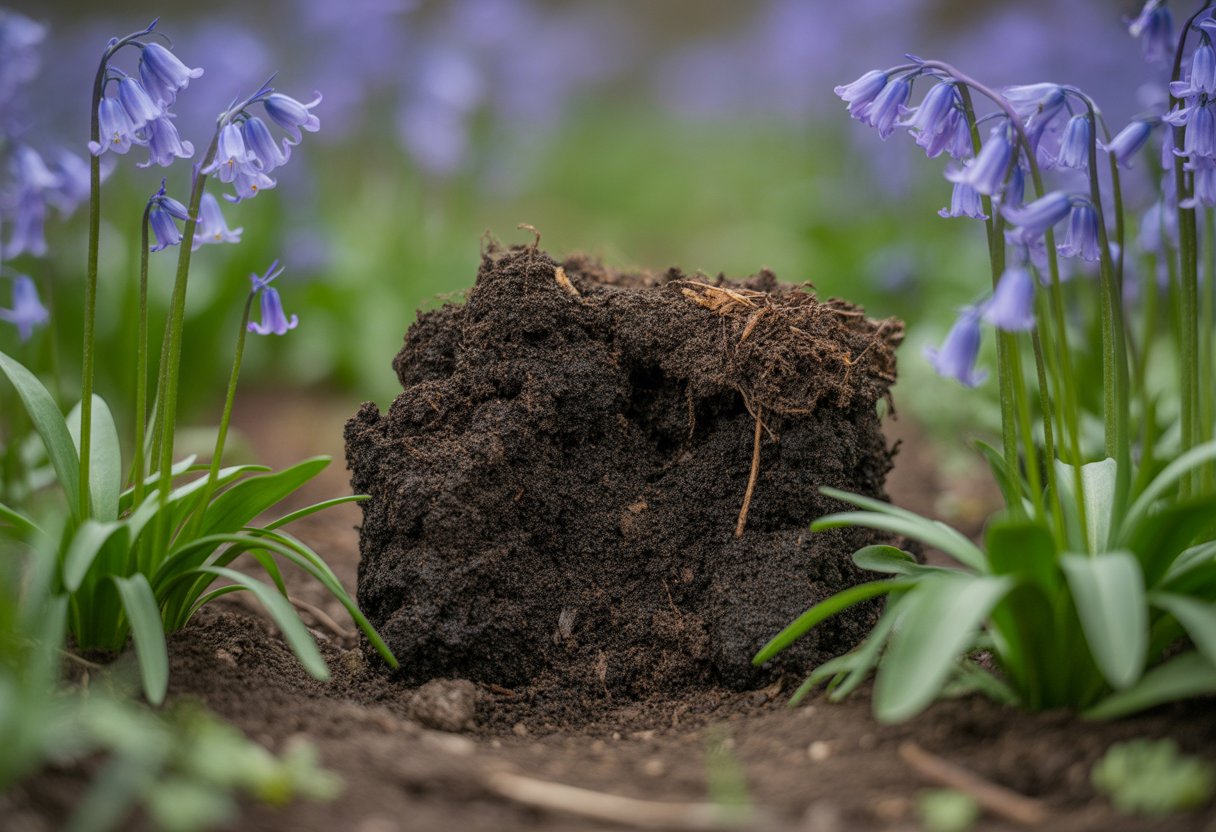
For bluebells, soil needs to hold moisture but let water drain away, keep nutrients available, and stick to the right pH. If you get those basics right, the bulbs grow strong and the flowers show off.
Ideal Soil Types
Bluebells like loamy or sandy loam soil loaded with organic matter. This lets their roots push through easily and gives them what they need.
Heavy clay? Not so much—it hangs onto water and can rot the bulbs.
Mixing in compost or leaf mold before planting makes the soil richer and a bit fluffier. Mulch with organic stuff to keep moisture steady and help control temperature swings around the roots.
Soil pH for Bluebell Growth
Bluebells do best in soil with a pH between 5.5 and 6.5—somewhere in the slightly acidic to neutral range.
That’s where they can actually grab minerals like iron and magnesium from the dirt.
If your soil’s way off, bluebells will struggle. It’s worth testing the pH before planting, so you know if you need to add sulfur to drop the pH or lime to bump it up.
Importance of Well-Draining and Moist Soil
Bluebells want moist soil that drains well—not puddles, not dust.
Too much water and the bulbs rot; too little and the growth just fizzles out.
Add organic matter to help soil hold onto water without turning swampy. If your soil’s packed down, loosen it up so water and air can get to the roots.
Planting and Care for Healthy Bluebells
If you want bluebells to really shine, pay attention to soil, moisture, and nutrients. How you plant, water, and feed them makes a big difference over the years.
Best Planting Practices
Bluebells settle in best when you plant them in well-draining, slightly acidic to neutral soil with plenty of organic matter. Bury bulbs about 4 inches deep and leave 4 to 6 inches between each one.
Early autumn works best for planting, giving roots a head start before winter.
Stay away from soggy spots to avoid bulb rot. They like a bit of shade, especially under trees that let in spring sun before leafing out. Every few years, dig up and split big clumps to keep them from getting crowded.
Watering Schedule Guidance
Keep soil moist during the growing season, but don’t drown the bulbs. Water bluebells enough to keep the ground damp, especially right after planting.
Once they’re growing, weekly watering usually does the trick unless it rains a lot.
When they’re blooming, you might need to water more if it’s dry. After flowering, cut back on watering and let the leaves die back on their own.
Once bluebells go dormant, they can handle short dry spells, but long droughts aren’t their thing.
Fertilizing and Feeding Tips
Go for a balanced bulb fertilizer or a slow-release, all-purpose blend in early spring when shoots pop up. Too much nitrogen isn’t great—it’ll just make leaves, not flowers.
Mix in compost or well-rotted manure before planting for a gentle, steady supply of nutrients. After the flowers fade, a light dose of fertilizer can help bulbs bulk up for next year.
Pruning and Maintenance
Snip off spent flower stalks so the plant puts its energy back into the bulbs, not seeds.
Let the leaves turn yellow and dry out naturally—they’re busy storing energy for next season.
Once the foliage is totally dead, cut it back to keep things tidy and cut down on disease risk. Loosen the soil a bit after pruning to help water and air reach the roots.
Environmental and Lighting Considerations
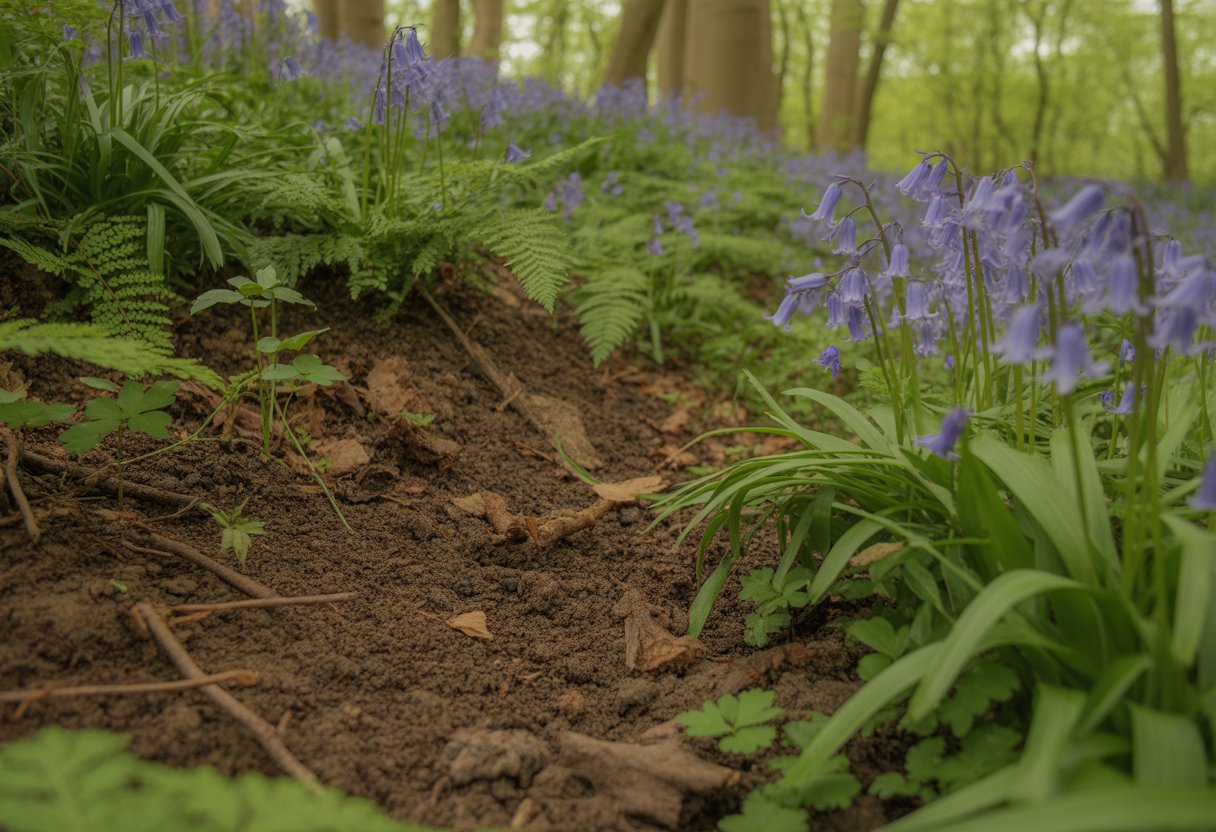
Bluebells need certain conditions to do their best. Light and temperature matter more than you’d think.
Sunlight and Shade Preferences
Bluebells prefer partial shade, soaking up filtered sunlight.
If you keep the soil wet enough, they’ll tolerate full sun, but too much hot, direct sun stresses them out.
Morning sun with afternoon shade? That’s the sweet spot. Woodland light or dappled shade feels most natural for them.
Different species have their own quirks, but most bluebells like shady environments and indirect light. Too much sun cuts down on blooms.
Temperature and Hardiness Zones
Bluebells handle cold pretty well, fitting into USDA hardiness zones 4 through 8.
They need a chilly period in winter to bloom right in spring.
Ideal growing temps run between 40°F and 70°F. If things heat up past 80°F, bluebells might go dormant or get stressed—unless you keep the soil cool and moist.
In hot climates, plant them in shady, cool spots. They’re not fans of extreme heat or long droughts.
Bluebell Species, Adaptation, and Common Challenges
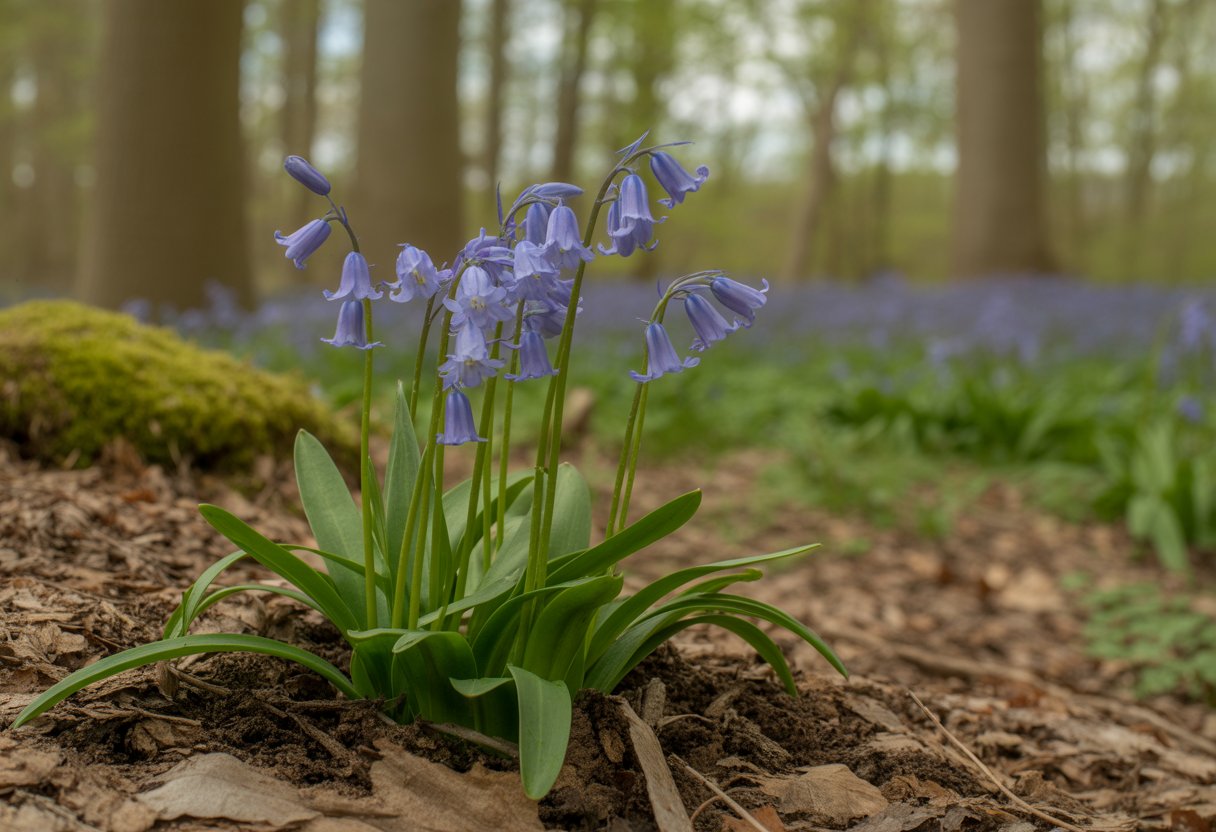
Bluebells come in a bunch of species, each with its own favorite soil and climate. They run into pest and disease problems, but you can usually head those off with a little effort.
Different Bluebell Species
The English bluebell (Hyacinthoides non-scripta) comes from the British Isles and likes shaded, rich, well-drained soil. Its deep blue, bell-shaped flowers draw in bees and butterflies.
Spanish bluebells (Hyacinthoides hispanica) are sturdier and adapt more easily, but they hybridize with English bluebells, which can mess with native populations.
The California bluebell (Mertensia ciliata) grows in cool, moist mountain soils.
Desert bluebells or wild hyacinth handle sandy, dry soils and don’t mind drought.
Figuring out which type you’ve got helps you match their care and soil to what they need.
Disease and Pest Prevention
Bluebells sometimes get hit by botrytis (gray mold), especially if things get humid or air doesn’t move well. First signs? Wilted, browning leaves.
Slugs and snails love munching on young shoots and leaves. Keeping an eye out and setting up barriers can keep them in check.
Don’t let the soil get soggy—root rot and fungal problems show up fast in wet spots. Good drainage and clean-up help a lot.
Check leaves and stems often for weird spots or discoloration. Use fungicides only if you really have to.
Naturalizing Bluebells in Various Gardens
If you want to naturalize bluebells, you’ve got to match the right species to your garden. English bluebells really shine in woodland spots or shaded borders, especially where the soil stays moist and there’s a layer of leaf litter.
Spanish bluebells handle open spaces well and can take more sun than the English kind. Just keep an eye on them—they can spread fast if you let them.
For dry or rocky gardens, desert bluebells or wild hyacinth make more sense. These species actually thrive in sandy or rocky soil and don’t need much water.
Mixing in native bluebells attracts local pollinators like bees and butterflies. It just makes the garden feel more alive.

